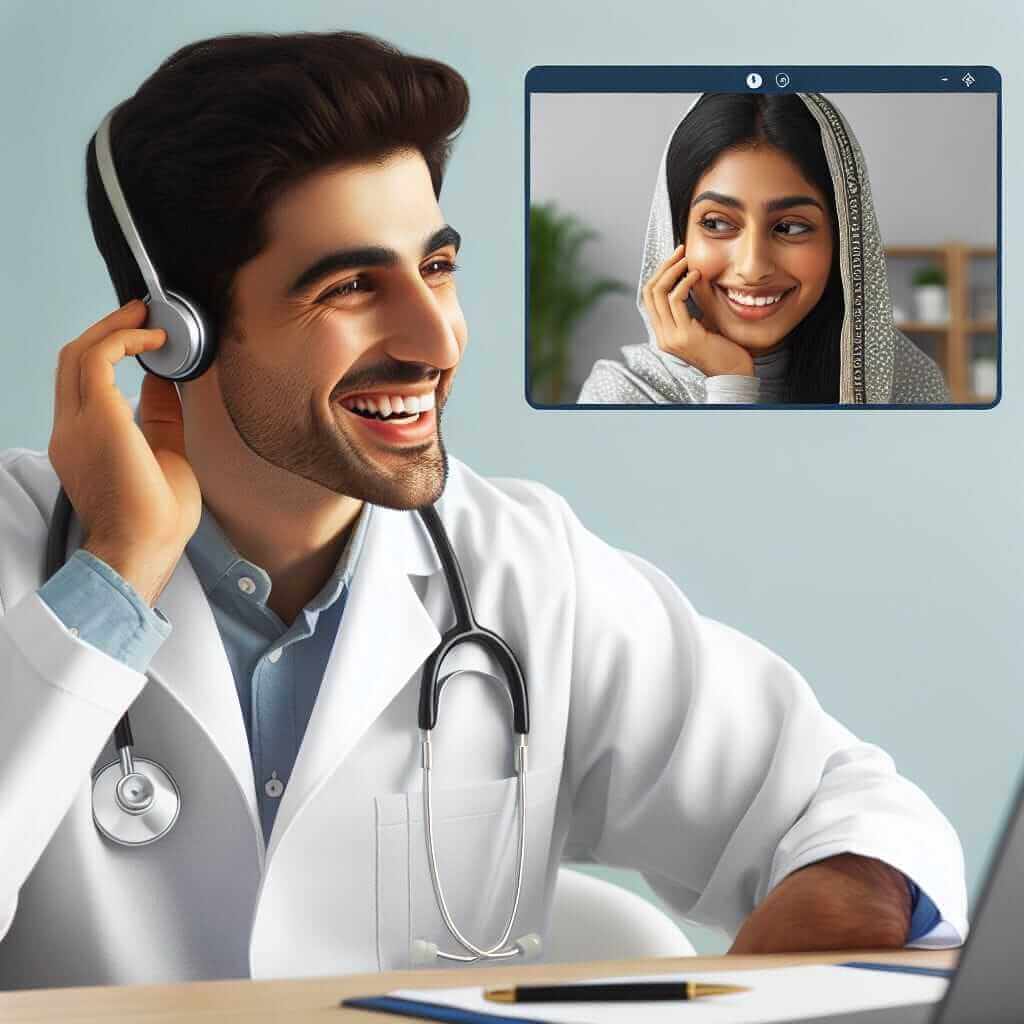“The impact of telemedicine on healthcare delivery” is a trending topic within the realm of healthcare and technology. This keyword, frequently appearing in IELTS Writing Task 2, explores the significant ways telemedicine is transforming how healthcare is provided and accessed.
Several LSI keywords are interconnected with this topic, enriching its scope and relevance:
- Telehealth: Often used interchangeably with telemedicine, it encompasses a broader range of remote healthcare services.
- Virtual care: A comprehensive term encompassing various digital healthcare solutions, including telemedicine.
- Remote patient monitoring: A specific application of telemedicine where patients’ health data is tracked remotely.
- Digital health: A broader category encompassing all applications of technology in healthcare.
- Healthcare accessibility: A key benefit of telemedicine, particularly for those in remote areas.
Understanding these interconnected terms is crucial for crafting a well-rounded and insightful IELTS essay on this topic.
Potential IELTS Writing Task 2 Questions
Based on past IELTS exams, here are some potential essay questions related to “The impact of telemedicine on healthcare delivery”:
- Telemedicine, the use of technology to diagnose and treat patients remotely, has become increasingly popular in recent years. What are the main advantages and disadvantages of this development?
- Some people argue that telemedicine will revolutionize healthcare delivery, while others believe that it will never replace the traditional doctor-patient relationship. Discuss both views and give your opinion.
- The increasing use of technology in healthcare, including telemedicine, is raising concerns about patient privacy and data security. To what extent do you agree or disagree?
Sample Essay: Analyzing the Advantages and Disadvantages of Telemedicine
Analyzing the Question
Let’s examine the first question:
Telemedicine, the use of technology to diagnose and treat patients remotely, has become increasingly popular in recent years. What are the main advantages and disadvantages of this development?
This question calls for a balanced discussion. You need to:
- Define telemedicine: Briefly explain what it is and how it works.
- Advantages: Discuss the positive impacts of telemedicine on healthcare delivery.
- Disadvantages: Analyze potential drawbacks or challenges associated with its implementation.
Sample Essay
Telemedicine, the practice of providing medical care remotely using technology, has witnessed a surge in popularity in recent years. While this innovation offers substantial benefits, it also presents certain limitations. This essay will explore both sides of this development.
One of the most significant advantages of telemedicine is its potential to bridge the geographical gap in healthcare access. Patients in remote or underserved areas, who previously faced significant challenges in accessing specialist care, can now connect with physicians virtually. This not only improves healthcare equity but also reduces travel time and costs for patients. Moreover, telemedicine facilitates proactive healthcare management. Remote patient monitoring, for instance, enables healthcare providers to track patients’ vital signs and other health indicators in real-time, leading to earlier interventions and better disease management.
However, the implementation of telemedicine is not without its challenges. One major concern is the potential for misdiagnosis or inadequate care due to the lack of physical examination. While technology allows for visual assessments and data exchange, it cannot fully replicate the nuances of a face-to-face consultation. Additionally, the reliance on technology raises concerns about data privacy and security. Ensuring the confidentiality of patient information during virtual consultations and data transmission is crucial for building trust and ensuring ethical practices within telemedicine.
In conclusion, telemedicine presents both compelling advantages and potential drawbacks. While its ability to improve healthcare access and facilitate proactive care is undeniable, concerns regarding the quality of care and data security must be addressed through robust regulatory frameworks and technological safeguards. Ultimately, a balanced approach that harnesses the benefits of telemedicine while mitigating its risks is crucial for shaping the future of healthcare delivery.
Word count: 277 words

Key Considerations for Writing Your Essay
- Structure: Follow a clear and logical structure, ensuring your essay has an introduction, body paragraphs (discussing advantages and disadvantages), and a conclusion.
- Vocabulary: Use topic-specific vocabulary related to healthcare, technology, and the advantages/disadvantages being discussed.
- Grammar and Accuracy: Pay attention to grammar rules, sentence structure, and punctuation to enhance clarity and readability.
- Supporting Ideas: Support your claims with relevant examples and explanations to strengthen your arguments.
Important Vocabulary
- Telemedicine: (noun) /ˌtɛlɪˈmɛdɪsɪn/ The use of telecommunication and information technologies to provide clinical health care from a distance.
- Healthcare delivery: (noun) /ˈhɛlθˌkɛr dɪˈlɪvəri/ The process of providing health services to patients.
- Remote patient monitoring: (noun) /rɪˈmoʊt ˈpeɪʃənt ˈmɑnɪtərɪŋ/ The use of technology to monitor patients’ health status outside of traditional clinical settings.
- Geographical gap: (noun) /ˌdʒiːəˈɡræfɪkəl ɡæp/ Inequalities in access to resources or services based on location.
- Proactive healthcare management: (noun) /ˌproʊˈæk.tɪv ˈhɛlθˌker ˈmæn.ɪdʒ.mənt/ Taking a preventative approach to healthcare by identifying and addressing potential health issues before they escalate.
Conclusion
This guide has provided insights into understanding and writing about the impact of telemedicine on healthcare delivery. Remember to explore additional related topics, such as the role of artificial intelligence in healthcare and the ethical implications of these advancements, to enhance your understanding and writing skills in this area. Practice writing essays on these themes, incorporating the vocabulary and insights provided, to excel in your IELTS Writing Task 2.